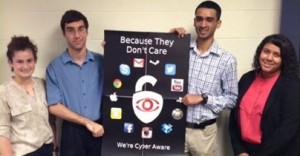
As part of this effort, Seidenberg first-year students in Dr. Bernice Houle’s UNV 101 class took the lead to share responsibility for online security by promoting cybersecurity awareness.

Events and Announcements

As part of this effort, Seidenberg first-year students in Dr. Bernice Houle’s UNV 101 class took the lead to share responsibility for online security by promoting cybersecurity awareness.

As mentioned in the previous blog post, Pace will be hosting Agile NYC for their 5th annual Agile Day, happening on the 18th. For most who have not been introduced to or worked with agile methodologies, the concept of the agile approach can seem a bit abstract, and abstraction might be intimidating at first, but agile is something you’ll want to understand concretely before looking for work.
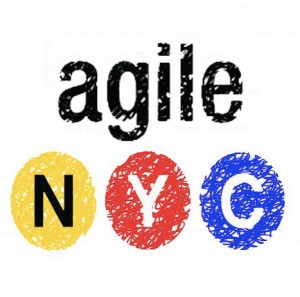 Agile NYC’s coordinator Joe Krebs, in answering a few of our questions about agile, mentioned that a company using the agile approach will expect its employees to be familiar with the methodologies before they are hired. So how does a student go from zero experience in agile to pro upon job-interview? (Actual representation of becoming an agile pro depicted below).
Agile NYC’s coordinator Joe Krebs, in answering a few of our questions about agile, mentioned that a company using the agile approach will expect its employees to be familiar with the methodologies before they are hired. So how does a student go from zero experience in agile to pro upon job-interview? (Actual representation of becoming an agile pro depicted below).
Well, you won’t have to be pro, but having some experience with agile will be necessary in your field. Luckily for most of you, gaining experience isn’t too hard around here, since Pace is one of Agile NYC’s closer partners. Agile NYC’s events are often in and around the university, like Agile Day on the 18th, and participating in these events will get you up to speed. Then, if you still want more practice, you can gain hands on experience by joining teams like Seidenberg Creative Labs, who will use the agile approach in their projects, or taking certain classes — an example of which being Dr. Scharff’s mobile software engineering class, CS 389 — that implement agile techniques on classroom projects. Having a rich understanding of agile will really give you the edge you need when employers compare you to you your competition.

Agile, in the simplest terms, is a product development methodology, specifically for programmers. Many careers in programming lead to projects where someone (or a company) will consult a team of programmers to build what they need. While the programmers do their thing and the ‘bosses’ do their own, often times problems arise from start to finish. The agile method of working through a project helps avoid a lot of these problems or provides simplified methods of solving said issues as they arise — and they will arise.
From its official conception in 2001, when the Agile Manifesto was created, agile’s values are described as,
“Individuals and interactions over processes and tools.
Working software over comprehensive documentation.
Customer collaboration over contract negotiation.
Responding to change over following a plan.
That is, while there is value in the items on the right, we value the items on the left more,” (agilemanifesto.org).
This set of rules directly opposes the more traditional methodology known as the Waterfall method. Agile emphasizes the importance of personable teamwork that moves forward as a cohesive effort, rather than a group of separated workers working towards a common goal. To do this successfully, agile encourages daily meetings for teams to discuss issues before or as they arise rather than after. Not only are daily meetings valuable for avoiding issues, they also stimulate creativity and brainstorming between team members. More often than not, these meetings take on an informal tone and promote a sort of playfulness to offset stress or idea blockage.
Now that you’re on your way to becoming an agile pro, instead of wandering around next Thursday’s event, spending all your time learning what the heck agile is in the first place, you can now focus on the real meat of Agile day and feast on its workshops and networking opportunities.
In just 5 days the Fall semester here at Pace will begin (as surely you have all realized by now. We hope). As usual, we don’t hesitate to get the motors running with the semester’s start. For example, here are 5 big things already happening in September that we think will fuel your engines for Fall 2014.
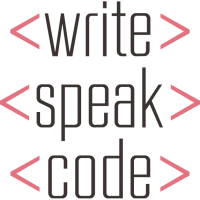
1. September 13th – Write/Speak/Code
Our friends at Write/Speak/Code will be hosting a free, full-day, intensive developer’s workshop for women. The workshop will offer a chance for women to work in tandem to learn, practice, or improve upon their skills in software development. Not only will women be able to level-up their expertise, but the workshop is a great way to network with other developers in the field. Registration is open now, and the event includes breakfast and lunch, if you weren’t already convinced.
2. September 10th & 17th – Student Panel
Assuming this year is like any other, a great many of you are possibly in the midst of a stressful, agonizing job search. If you’re tired of being inexperienced (or just plain broke), Seidenberg will be hosting two student panels focusing on how panelists found their summer’s jobs or internships. The two days will be split between undergrad (17th) and graduate (10th) panelists. For information on the dates, keep up with Seidenberg’s Twitter or Facebook feed, where we’ll be announcing information as we receive it and posting reminders for your convenience.
3. September 18th – AgileDay NYC
The 5th annual Agile Day will once again be happening here at Pace University. The event consists of talks from various Agile front runners, with topics such as ‘Innovation in a Rapidly Changing World,’ and ‘Developing Product Developers and Product Ownership.’ Once the talks finish, the entire Student Union will open up to host workshops and activities to promote Agile ideologies and networking within the expected crowd of 350+ agile professionals. Registration is ongoing and filling up fast, so take a look at reserving a spot. Or, as admission can be pricey on a student’s budget, we are offering a number of volunteer spots. Volunteers will be able to attend the event for free; those interested in volunteering should email Wilfredo Pena at wpena@pace.edu.
4. September 25th – UX Agency Launch
Seidenberg students Stas Vaisman and Adil Hasan are building up a UX agency that will be launching this fall. Their goal is to gather a team of students from a multitude of disciplines (Hey, Dyson! Hey, Lubin!) who will ultimately work with Seidenberg Creative Labs to enhance UX on various platforms. UX – User Experience – is rapidly emerging as a career field, focusing on all aspects surrounding product development (especially in start ups). The agency, also known as Schooled, has connections to a university in Germany, offering students who join a chance to build their own international network while gaining real-world experience. On the 25th at 6pm (Bianco Room, One Pace Plaza), Vaisman and Hasan will be fully explaining their initiative to anyone interested in joining. No reservations are required and free pizza will be served as bait!
5. September 20-21st – DroidCon 2014
 For all you Android enthusiasts, DroidCon is definitely going to be worth your while. This event will be the “world’s biggest, community-driven, Android developer conference,” according to the DroidCon home page. As an international conference, you’ll have a chance to learn about Android advances from the farthest corners of the world. DroidCon has also officially announced its top-10 speakers for the event, boasting an impressive host of professionals in the Android community. Registration for the conference lasts until the 19th. Tickets start at 100$, but of course we have your backs with free volunteer positions at the event. Those interested in attending DroidCon for free as a volunteer should email Dr. Christelle Scharff at cscharff@pace.edu.
For all you Android enthusiasts, DroidCon is definitely going to be worth your while. This event will be the “world’s biggest, community-driven, Android developer conference,” according to the DroidCon home page. As an international conference, you’ll have a chance to learn about Android advances from the farthest corners of the world. DroidCon has also officially announced its top-10 speakers for the event, boasting an impressive host of professionals in the Android community. Registration for the conference lasts until the 19th. Tickets start at 100$, but of course we have your backs with free volunteer positions at the event. Those interested in attending DroidCon for free as a volunteer should email Dr. Christelle Scharff at cscharff@pace.edu.
Not to take anything away from Mr. Modi, but this celebration’s a little closer to the heart!
Congratulations to our very own Seidenberg grad student – Arbaaz Sayyed, on being elected the new President of the Pace Indian Students Association (PISA).
We were lucky enough to spend some time with him before he headed off to India for the summer – one heck of a victory lap and some serious planning for PISA! Here’s what we found out.
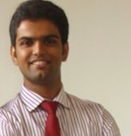
Q. Pick 5 words that describe you the best.
A. Leader. Perfectionist. Experienced. Sociable. Um, modest? (…he said with a wide grin)
Q. What makes you qualified for this role?
A. Within the last 8 years, I’ve been a Committee Member, an Organizational Secretary, and a Chairperson. I’ve even coordinated activities for the IEEE in India .It becomes a-lot more fun when you love what you do. My first job at Pace was with SDACA. We did some great work for the student body.
Q. Tell us about PISA.
A. PISA is a cultural, professional and social association made up primarily of Indian students at Pace. Up until last year it was purely for Lubin students, but now it’s open to everyone. One of our main focuses this year will be to better connect with all the incoming international students so that we can offer them a better experience at Pace. I’d also like to slowly grow the work PISA does and collaborate with other existing associations & clubs at the university, so as to provide a more holistic member experience.
Q. What will your first move be?
A. Right now, our agenda is to plan and execute events for humanitarian causes, professional development workshops and networking opportunities for students.
Q. How can one join PISA?
A. Just walk into one of our meetings. It’s that simple! You can even email me at as07113n@pace.edu or call me on 646-492-8590.
“It’s a proud moment,” says Dean Amar Gupta of The Seidenberg School of Computer Science & Information Systems.
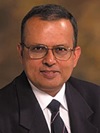
“The Pace Indian Students Association (PISA) originally started as the PISA Graduate Student Organization at the Lubin School. During recent months, its scope was widened to include Seidenberg, and we are honored that Arbaaz Sayyed from our school has been elected as its President. With his interest in Leadership activities and his diverse background, Arbaaz is ideally suited to lead this organization. My hope is that the scope of the activities and the membership will continue to grow under his leadership.”
– Interviewed by Suhail Bhandari
by Suhail Bhandari
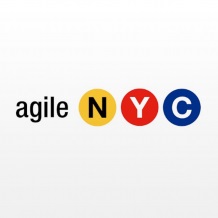
When it comes to agile methodology and managing distributed teams, there’s only one master.
“I gotta girl in Paris, I gotta girl in Rome
I even gotta girl in Vatican Dome
I gotta girl right here, I gotta girl right there
And I gotta girlfriend everywhere…”
– Lou Bega
The last AglieNYC meeting, held at Pace University’s Seidenberg School, was a real eye opener.
With the world becoming smaller and businesses embracing buzzwords like multi-team, multi-location, multiple business area and even multi-time zone, it’s surprising how many people still use ‘distributed teams’ to defend moments of unproductivity.
“Distributed teams are inevitable, so they can’t be excuses!” began Ian White and Andrew Borrows, the presenters that night. “Lets start out by listing the biggest problems faced by POs and distributed teams.” The problems were:
There’s a common feeling that the main issue is all about ‘lack of communication’. However, the problem is actually poor project structure and teamwork.
“Now we can find solutions by asking ‘why,’ at each step…”
Management is a crucial aspect of ensuring any team operates efficiently – especially if that team happens to be dispersed around the globe. As always, good planning and communication really helps keep things running smoothly. A distributed team is not a limitation; it’s an opportunity – and it’s time we take advantage!